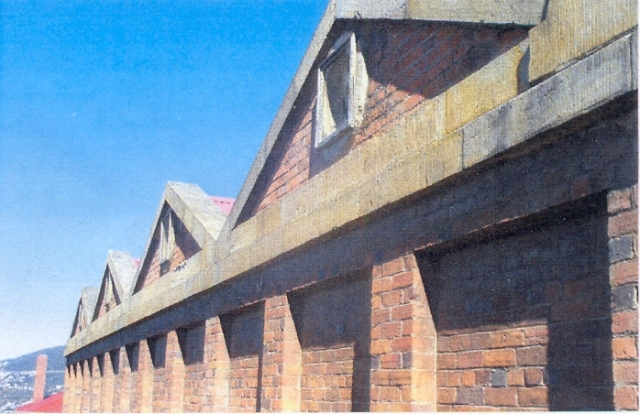Brief chronology
Open Doors – Tasmanian Heritage Festival
31 May 2009
| 1804 | Settlement at Sullivan’s Cove – supply of fresh water from stream (Hobart Rivulet) |
| 1831 | First use of conduits and pipes to convey water from Mount Wellington. |
| 1845 | First major reservoir on Hobart Rivulet – Peter Degraves |
| 1846 | Board of Commissioners – initial steps towards local government |
| 1853 | Municipal Council established |
| 1853 | Government Reservoir on Rivulet (above Cascades) |
| 1857 | Municipal reform – Hobart Town Corporation |
| 1859-61 | First stage of mountain pipeline commenced – initially to Wishing Well (Fork Creek) and Fern Tree Bower (Browns River) |
| 1861 | Lower Reservoir on Sandy Bay (or Wellington) Rivulet at the Waterworks |
| 1862 | First Hill Street reservoir, built to hold 451,000 gallons (2 mega litres) – supplied from the Waterworks, with bridge across Hobart Rivulet at Gore Street |
| 1867-69 | Pipeline extended to Long Creek |
| 1871 | Failure of Lower Reservoir at the Waterworks |
| 1871 | Leaks in Hill Street reservoir – water restrictions from Hill Street (6-9am and 5-7pm daily) |
| 1875 | Pipeline extended to The Plains Rivulet at St Crispin’s Well |
| 1880 | New pipe to Hill Street |
| 1883 | Second Hill Street reservoir (267,000 gallons – 1.2 mega litres) |
| 1887-88 | Construction of Upper Reservoir at the Waterworks |
| 1893-95 | Reconstruction of lower Reservoir at Waterworks |
| 1901-1904 | Pipeline extended to North West Bay River |
| 1909 | Forest Road Reservoir (decommissioned late 1970s) |
| 1912-17 | Ridgeway Reservoir |
| 1916 | West Hobart tram line opened |
| 1921 | Princess (or Princes) Street renamed Cavell Street |
| 1937-39 | Construction of lake Fenton (Mt Field) scheme |
| 1939 | Augusta (or Augustus) Terrace renamed Faraday Street |
| 1961-63 | West Derwent System – supply of water pumped from River Derwent (near Hayes) – Lawitta and Bryn Estyn supply |
The current reservoir has a maximum capacity of 3 mega litres, with an operating capacity of 2.25 mega litres. The main circular reservoir is 4.5 metres deep, with an additional 1.2 metres above. It is now generally fed from the twin reservoirs near the Crossroads on the Queen’s Domain (which are approximately 11.6 metres higher above sea level). Part of Hobart’s complex water supply system, the reservoir now serves as a reserve water supply and for fire-fighting back-up.
Further reading:Crawford, PG and Ryan KA, The History of the Early Water Supply of Hobart: The First 100 Years 1804-1904. Hobart, Institution of Engineers, Australia, 1988.
Godden Mackay Logan, Crescent Fields: A Thematic History of West Hobart. Hobart City Council, 2002.
Lloyd, Bernard, The Water Getters: how Hobart quenched its thirst, Goodwood, Hobart Water, 2008.
Petrow, S and Alexander, A. Growing with Strength: A history of the Hobart City Counci/1846-2000, Hobart City Council, 2008.

